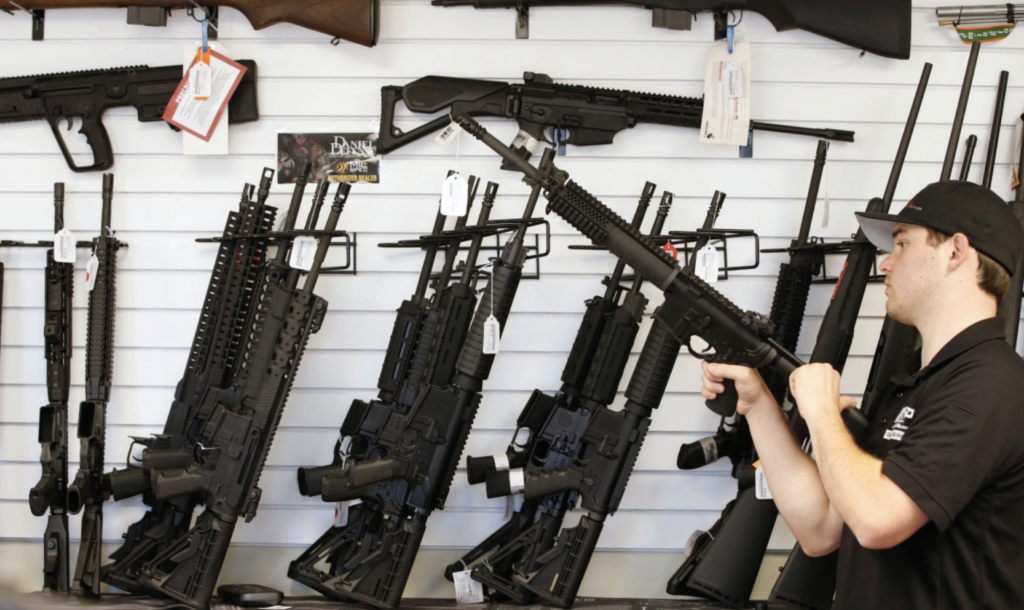
Since the beginning of 2021, there has been a major uptick in gun violence with a total of 147 mass shootings in the United States and a 73% increase in mass shootings from the same four-month period last year. These shootings have also gotten more deadly, with 176 deaths in 2021, compared to 92 deaths from January to April 2020 according to the Insider.
Amid the rise in gun violence, gun sales also spiked. According to Forbes, in 2020, gun sales increased to nearly forty million, a 40% increase from the year before. The likely cause behind the spike in sales was the effect of the pandemic on law enforcement. Many police departments were unable to respond to some calls, due to a shortage of officers in the department. In addition, the political climate and the protests regarding police brutality in the last year had people on edge.
But this rise in gun violence and gun sales is not restricted to the past year. Over the last two decades, gun-related deaths have increased from 28,874 to around 40,000. Similarly, according to Statista, the percentage of gun ownership rate by American households has climbed from 39% to 42%, a major increase in the number of firearms in the United States when compared to the population growth.
The rise in gun violence has led many people to ask what the solution to this problem is. Some propose instituting more stringent gun laws, such as a ban on “assault rifles,” or raising the minimum age required to purchase a firearm from 18 to 21. Others argue that more guns would allow Americans to better protect themselves from criminal threats. Although finding an agreed-upon solution has proved challenging in the past, it’s clear that no single policy change is going to eliminate all gun deaths, rather, individual policies can help to mitigate the issue.
Pushed by Joe Biden, The proposed ban on assault rifles was instituted in 1994 and expired in 2004. It has yet to be renewed to this day. While there is no universal legal definition for an “assault rifle,” FBI estimates of deaths by rifles have consistently been in the range of 200 to 400, making them a small percentage of gun deaths, and indicating that policy aimed at removing the ownership of assault rifles would not solve the issue of gun violence as a whole.
Predominantly, gun violence occurs through the use of handguns, whose concealability and semi-automatic nature make them particularly dangerous weapons. Therefore, if any solution to gun violence is proposed, it must target the source of the issue: appalling numbers of individual murders with handguns. Instituting a ban on all semi-automatic firearms may seem effective, but such a ban is an infringement on Americans’ second amendment right, which exists for the purpose of allowing citizens a means of protecting themselves from criminals and the government, should it overstep its bounds. If the government is allowed to put a ban on semi-automatic weapons as a whole, there is nothing stopping them from extending this law to all firearms. This creates a scenario in which the government is the only entity with ownership of firearms. Ultimately, the second amendment, which allows citizens to bear arms, exists not for citizens to protect themselves from each other, but for, as the amendment states, “the security of a free state.” Such a free state can not be maintained if there is nothing stopping the government from imposing its will upon the people.
The solution to gun violence shouldn’t be one which results in law-abiding American citizens getting their firearms taken away, but rather one which prevents guns from getting into the hands of people who pose a threat to others. One solution that addresses the source of the problem is a law that allows family members and some medical professionals to petition for the removal of a firearm from a person if they believe there is a risk to others. A trial would follow the petition and should the person be deemed a danger to others, they would be barred from owning the weapon. The issue of the constitutionality of such a law goes to the question of when these firearms are removed from the possession of the prosecuted person. If the firearm is removed at the moment of petition, before a trial, this would be a violation of the fifth amendment, which states that “No person shall be … deprived of life, liberty, or property, without due process of law.”
If the seizure of the weapon occurs after a court determines that the ownership of a weapon is likely to put others at risk, this law would be consistent with other laws that prevent certain people from owning guns; this includes people who were dishonorably discharged from the military, those who have convicted on a misdemeanor of domestic violence, and those who have been deemed mentally unstable. Restricting those who are able to petition for the removal of a firearm to just family and certain medical professionals would prevent government abuse of this policy.
While an effective change in gun policy can save lives, we must ensure that the federal government does not violate the constitutional rights that this country was founded on.




